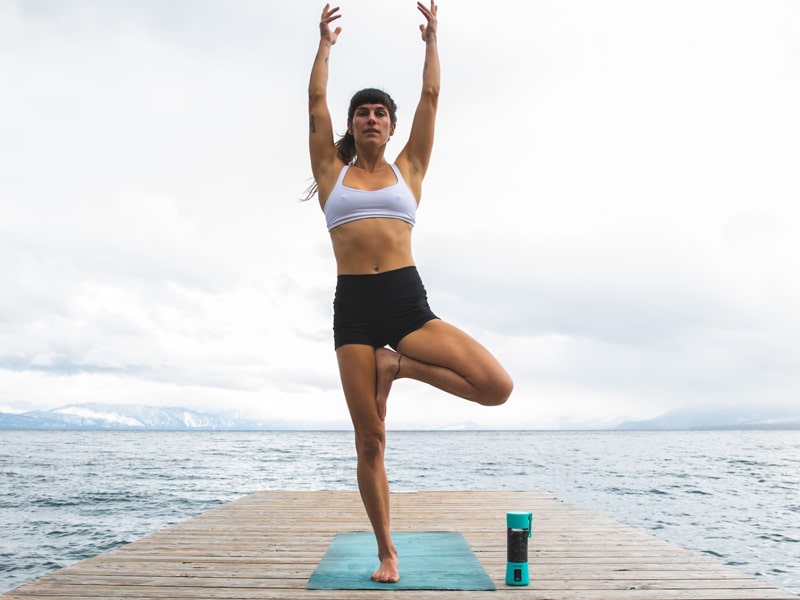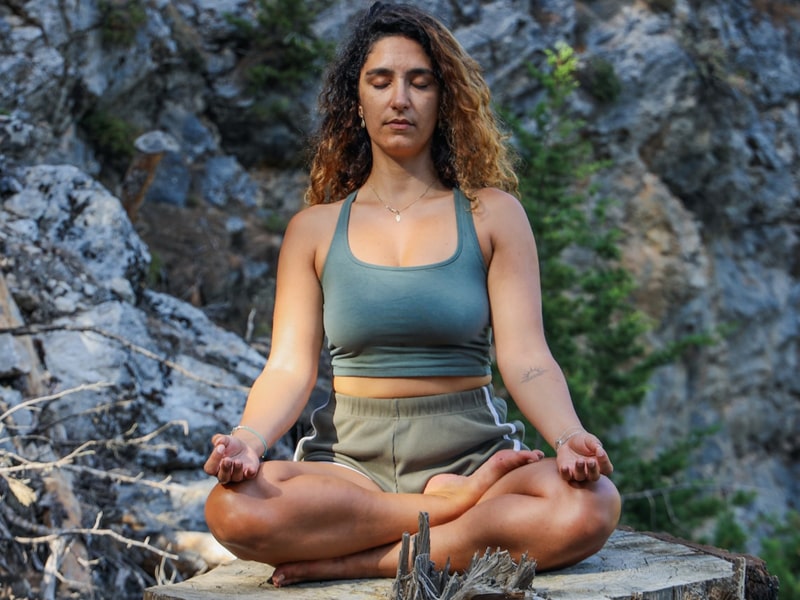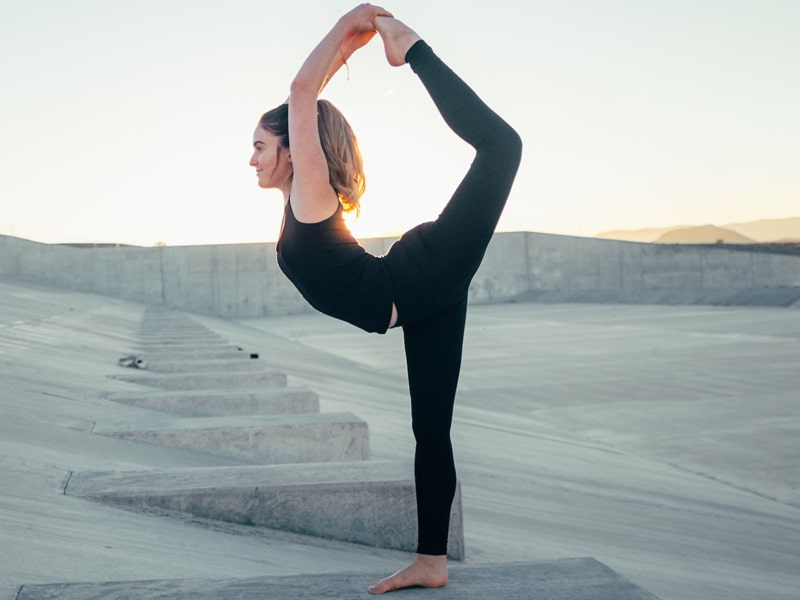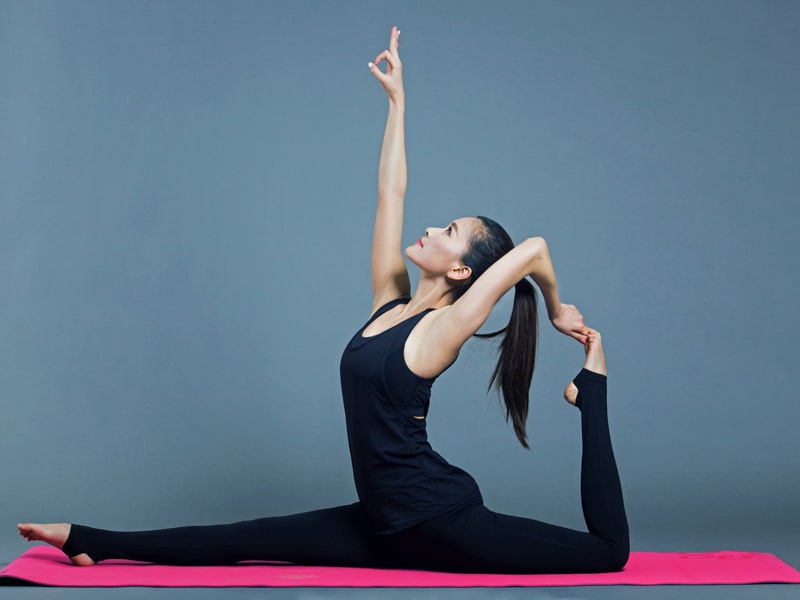What is Yoga ?
Yoga is an ancient practice that originated in India thousands of years ago. It is a holistic approach to health and wellness that encompasses physical, mental, and spiritual aspects. The practice of yoga involves a series of physical postures, or asanas, which are designed to improve flexibility, strength, and balance. These postures are typically performed in a specific sequence, with each pose flowing into the next in a continuous movement.
In addition to the physical postures, yoga includes breathing techniques, or pranayama, which are designed to help control the breath and promote relaxation. Meditation is also an important aspect of yoga practice, which involves focusing the mind on a specific object or idea to promote calm and relaxation.
Beyond the physical postures and breathing techniques, yoga encompasses a wide range of practices and principles that are designed to promote overall well-being. These may include philosophical concepts such as non-violence, self-discipline, and compassion, ethical principles such as honesty and integrity, and the cultivation of self-awareness and mindfulness.
Yoga is a powerful tool for promoting health and wellness on multiple levels. By practicing yoga regularly, individuals can improve their physical health, reduce stress and anxiety, enhance their self-awareness, and promote a sense of overall well-being.
Why do Yoga ?
Yoga is a form of exercise that has been around for centuries. It is a physical and mental discipline that originated in India. Yoga can be done by people of any age, size or ability.
Yoga is about improving your health and well-being through the practice of postures, breathing exercises and meditation. Yoga can improve your mental health by reducing stress, anxiety and depression. It can also reduce chronic pain and increase flexibility as well as strength.
There are many reasons why people practice yoga. Some people practice yoga for physical fitness and flexibility, while others practice it for stress relief and relaxation. Yoga is also known to promote mental clarity and focus, which can be helpful for those dealing with anxiety or depression.
Yoga is a holistic practice that promotes overall health and well-being, both physically and mentally. It can help to improve circulation, strengthen muscles, and increase flexibility and balance. Yoga also helps to reduce stress and tension in the body and mind, which can lead to a greater sense of peace and calm.
Additionally, yoga can be beneficial for those dealing with specific health conditions. For example, yoga has been shown to be helpful for those dealing with chronic pain, high blood pressure, and anxiety disorders. It can also be helpful for those recovering from injuries or surgeries, as it promotes gentle movement and can help to improve mobility and flexibility.
Overall, the benefits of yoga are numerous and varied, and the practice can be adapted to suit the needs and goals of each individual practitioner. Whether you are looking to improve your physical fitness, reduce stress and anxiety, or simply cultivate a greater sense of inner peace and well-being, yoga can be a powerful tool for achieving your goals.
The Main benefits of yoga
Yoga is a holistic approach to health and wellness, offering numerous benefits for both the body and the mind. Here are ten of the main benefits of practicing yoga :-
-
Improved flexibility and range of motion :- The physical postures, or asanas, in yoga can help improve flexibility and increase range of motion in the joints, making it easier to move through daily activities.
-
Increased strength and muscle tone :- Many yoga poses require you to support your own body weight, which can help build strength and tone muscles.
-
Improved balance and posture :- Practicing yoga can help improve balance and posture by strengthening the core muscles and promoting proper alignment.
-
Reduced stress and anxiety :- Yoga can help reduce stress and anxiety by promoting relaxation and mindfulness. The breathing techniques used in yoga can also help calm the nervous system and promote relaxation.
-
Improved sleep quality :- Regular yoga practice can help improve sleep quality by promoting relaxation and reducing stress.
-
Boosted immunity and overall health :- Some studies have shown that yoga can help boost the immune system and promote overall health by reducing inflammation and improving circulation.
-
Increased mindfulness and self-awareness :- Yoga practice can help increase mindfulness and self-awareness by encouraging you to focus on the present moment and connect with your body and breath.
-
Reduced risk of injury :- By improving flexibility, strength, and balance, yoga can help reduce the risk of injury during physical activity.
-
Pain relief :- Yoga has been shown to help reduce pain in individuals with conditions such as arthritis and back pain.
-
Better mental health :- Yoga can help improve mental health by reducing symptoms of depression and anxiety, improving mood, and promoting a sense of calm and well-being.
Also Read :- 12 Best Yoga Mats Online To Buy in India
Types of yoga
There are many different types of yoga, each with its own unique focus and approach. Here is a comprehensive list of some of the most popular types of yoga :-
-
Hatha Yoga :- This is the most widely practiced form of yoga in the Western world. It focuses on physical postures, or asanas, and breathing techniques, or pranayama. Hatha yoga is great for beginners because it is gentle and helps to build strength, flexibility, and balance.
-
Vinyasa Yoga :- This type of yoga involves flowing from one posture to the next in a continuous movement, linking breath with movement. It is a more dynamic and energetic form of yoga, and can be a great way to build strength and cardiovascular fitness.
-
Ashtanga Yoga :- Ashtanga yoga is a challenging and physically demanding form of yoga that involves performing a series of set postures in a specific order. It is a great choice for those looking for a more structured and disciplined approach to their yoga practice.
-
Bikram Yoga :- Also known as “hot yoga,” Bikram yoga involves performing a series of 26 postures in a room heated to 105 degrees Fahrenheit. The heat is believed to help increase flexibility and detoxify the body.
-
Iyengar Yoga :- This form of yoga focuses on precise alignment and the use of props like blocks, straps, and blankets to support the body in various postures. It is great for those looking to improve their posture and alignment.
-
Kundalini Yoga :- Kundalini yoga involves a combination of physical postures, breathing techniques, and meditation to help balance the body and mind. It is believed to help awaken the energy at the base of the spine, known as the Kundalini.
-
Restorative Yoga :- This type of yoga is all about relaxation and rejuvenation. It involves holding gentle postures for longer periods of time, using props like blankets and bolsters to support the body.
-
Yin Yoga :- Yin yoga is a slow and gentle form of yoga that focuses on stretching and strengthening the connective tissues in the body, such as the joints and ligaments. It involves holding postures for several minutes at a time, and can be a great way to improve flexibility and reduce stress.
-
Anusara Yoga :- Anusara yoga is a heart-centered form of yoga that focuses on alignment, movement, and breath. It is designed to help practitioners cultivate a sense of joy, freedom, and connection with themselves and others.
-
Jivamukti Yoga :- Jivamukti yoga is a modern form of yoga that combines physical postures with spiritual teachings, music, and meditation. It is designed to help practitioners connect with the deeper aspects of themselves and the world around them.
The importance of breathing in yoga
Breathing is an essential aspect of yoga practice, and is often referred to as pranayama. In yoga, the breath is considered the bridge between the body and the mind, and is believed to help bring balance and harmony to both.
The importance of breathing in yoga can be understood through several key factors :-
-
Oxygenation :- Deep, mindful breathing during yoga practice helps to increase the flow of oxygen to the brain and other parts of the body, which can help to increase energy levels and improve overall health.
-
Mind-body connection :- Focusing on the breath during yoga practice helps to bring attention to the present moment and to connect the body and mind. This can help to reduce stress and anxiety, improve mental clarity and focus, and promote a sense of inner calm and well-being.
-
Increased lung capacity :- Regular yoga practice can help to improve lung function and increase lung capacity over time, which can be especially beneficial for individuals with respiratory issues like asthma or COPD.
-
Relaxation and stress reduction :- Deep breathing during yoga practice helps to activate the parasympathetic nervous system, which helps to promote relaxation and reduce stress and tension in the body and mind.
Tips For Starting Yoga For Beginners
If you’re new to yoga, congratulations on taking the first step towards improving your physical and mental well-being! Here are 16 tips to help you get started as a beginner :-
-
Find a qualified instructor :- Before starting yoga, it’s important to find a qualified instructor who can guide you properly. Ask your friends for recommendations or look online for reviews.
-
Find the right class :- Look for a yoga class that is specifically designed for beginners, as it will provide you with the foundational elements of the practice.
-
Don’t be afraid to ask questions :- Yoga can be intimidating, but don’t be afraid to ask questions to your instructor or fellow students. It’s important to clarify any doubts you may have to avoid injury and get the most out of your practice.
-
Start with basic poses :- When you’re just starting out, it’s important to focus on the basics. Mastering the basics will help build a strong foundation for more complex poses.
-
Start slowly :- Don’t try to do too much too soon. Start slow and work your way up as you become more comfortable with the poses.
-
Practice regularly :- To get the most out of yoga, it’s important to practice regularly. Try to do it at least three times a week for optimal results.
-
Research different styles of yoga :- There are a variety of styles of yoga, such as Hatha, Vinyasa, and Bikram. Knowing which style will best suit you is important.
-
Take it slow :- It can be tempting to try more difficult poses, but don’t push yourself too hard. Take your time to learn the poses, and listen to your body.
-
Invest in the right equipment :- Having the right equipment is essential for doing yoga safely. Invest in a good quality yoga mat, comfortable clothing, and a few props such as blocks or straps.
-
Listen to your body :- Always listen to your body and take breaks when you need them. Yoga should never be painful, so take it slow and stop if you need to.
-
Wear comfortable clothing :- Choose clothing that is loose and comfortable. Yoga is typically done barefoot, so you don’t need to worry about special shoes.
-
Use a yoga mat :- A mat will provide a non-slip surface and some cushioning. If you don’t have a mat, you can use a beach towel or a blanket.
-
Focus on your breath :- Pay attention to your breath as you move through the poses. This will help you stay present and focused, and also improve your breathing patterns.
-
Consult with your doctor :- If you have any health concerns, it’s a good idea to consult with your doctor before starting a yoga practice. This is especially important if you have any medical conditions or injuries.
-
Don’t compare yourself to others :- Everyone’s body is different, and we all progress at different rates. Focus on your own practice and don’t compare yourself to others.
-
Be patient :- It takes time to see progress in your yoga practice. Be patient and trust the process. With time and dedication, you’ll see improvement and grow in your practice.
Tips on how to do yoga at home for Beginners
Here are some tips for beginners on how to do yoga at home :-
-
Create a dedicated space :- Set up a dedicated space for your yoga practice, where you can lay your mat and have some room to move around.
-
Choose the right time :- Choose a time of day that works best for you, and try to stick to a consistent schedule.
-
Use props :- Props such as blocks, straps, and blankets can help make certain poses more accessible for beginners and help prevent injury.
-
Start with simple poses :- Begin with simple poses, such as Mountain Pose, Downward Facing Dog, and Child’s Pose, and gradually work your way up to more advanced poses as you become more comfortable.
-
Focus on your breath :- Pay attention to your breath as you move through the poses, and try to keep your breath slow and steady.
-
Take breaks when needed :- Listen to your body and take breaks when needed. Don’t push yourself too hard or force yourself into poses that don’t feel comfortable.
-
Be patient and consistent :- It takes time to build a consistent yoga practice, so be patient with yourself and stick with it. Over time, you will begin to see progress and feel the benefits of your practice.
-
Start with beginner-friendly videos :- There are many online yoga videos that cater to beginners. Look for videos that are labeled as beginner-friendly, and start with those.
-
Listen to your body :- Always listen to your body during your practice. If something doesn’t feel right, modify the pose or skip it altogether. It’s important to avoid pushing yourself too hard, especially as a beginner.
-
Stay hydrated :- It’s important to stay hydrated during your yoga practice. Keep a water bottle nearby and take sips as needed.
-
End with Savasana :- Always end your practice with Savasana, or Corpse Pose. This is an important part of your practice that allows your body to relax and integrate the benefits of your practice.
Also Read :- Yoga For Stress Management – Say Goodbye to Stress
Top best accessories for yoga
Here is a comprehensive list of top accessories for yoga practice :-
-
Yoga Mat :- A yoga mat is essential for any yoga practice, providing a non-slip surface to support your poses. Choose a mat that is durable, lightweight and provides good cushioning.
-
Yoga Blocks :- Yoga blocks help to modify poses for better alignment, deepen stretches and make poses more accessible for beginners.
-
Yoga Strap :- A yoga strap is a helpful tool to assist with flexibility, especially for poses that require reaching or stretching beyond your current range of motion.
-
Yoga Blanket :- A blanket can be used for extra cushioning, support, and warmth during meditation or relaxation poses.
-
Yoga Bolster :- A yoga bolster is a long, firm pillow that provides support for restorative and gentle yoga poses.
-
Yoga Wheel :- A yoga wheel is a circular prop used for stretching, strengthening and improving balance in various yoga poses.
-
Yoga Towel :- A yoga towel is designed to absorb sweat and provide a non-slip surface, especially for hot yoga or vigorous practices.
-
Meditation Cushion :- A meditation cushion helps to support a comfortable and upright posture during meditation practice.
-
Yoga Mat Bag :- A yoga mat bag helps to protect and transport your yoga mat, blocks, and other accessories.
-
Yoga Clothes :- Comfortable and breathable yoga clothes that allow for freedom of movement and flexibility are essential for any yoga practice.
What is the best time for yoga?
The best time for yoga can vary from person to person, depending on their schedule, lifestyle, and personal preferences. However, traditionally, the best time to practice yoga is early in the morning, before breakfast. This time is known as Brahma Muhurta in yoga, which is considered the most auspicious time of the day for spiritual practices.
Practicing yoga in the morning helps to wake up the body and mind, energize the system, and set a positive tone for the day ahead. It can also help to regulate the sleep-wake cycle, improve digestion, and boost metabolism.
However, if you are unable to practice yoga in the morning, you can also do it in the evening, before dinner. Evening yoga can help to release the stress and tension of the day and promote relaxation and better sleep.
Ultimately, the best time for yoga is the time that works best for you and your schedule. The most important thing is to find a time that you can commit to regularly, whether it’s morning or evening, and make yoga a consistent part of your daily routine.
Also Read :- Watch Yoga Images HD Here
List of best & easy yoga asanas for beginners
Here is a list of some of the best and easy yoga asanas for beginners :-
Mountain Pose (Tadasana) is a great starting point for any yoga practice as it helps improve posture and balance. It is a simple standing posture that involves standing tall with your feet grounded, arms by your side, and focusing on your breath.
Downward Facing Dog (Adho Mukha Svanasana) is a classic yoga pose that stretches the entire body and strengthens the arms and legs. It is a great pose for beginners to learn as it helps to build strength, flexibility, and endurance.
Child’s Pose (Balasana) is a restful pose that helps relieve stress and tension in the back, neck, and shoulders. It is often used as a resting pose in between more challenging poses and is a great way to release tension in the body.
Tree Pose (Vrikshasana) is a balancing posture that strengthens the legs and improves concentration. It involves standing on one leg while bringing the other foot to rest on the inner thigh of the standing leg, with arms stretched above the head.
Cobra Pose (Bhujangasana) is a gentle backbend that helps improve posture, relieve back pain, and strengthen the arms and shoulders. It is a great pose for beginners to help strengthen their back muscles and improve spinal flexibility.
Warrior I (Virabhadrasana I) is a standing posture that strengthens the legs and improves flexibility in the hips and shoulders. It involves standing with one leg forward and the other leg back, with arms stretched above the head.
Triangle Pose (Trikonasana) is a side-bending posture that stretches the hamstrings, hips, and back. It involves standing with your legs wide apart, bending sideways with one arm reaching towards the floor and the other arm reaching towards the ceiling.
Seated Forward Fold (Paschimottanasana) is a gentle forward bend that helps calm the mind and relieve stress. It involves sitting on the floor with your legs stretched out in front of you, and then bending forward to reach your toes.
Bridge Pose (Setu Bandha Sarvangasana) is a gentle backbend that helps relieve tension in the back and neck, and strengthens the legs and glutes. It involves lying on your back with your knees bent and feet on the floor, then lifting your hips towards the ceiling.
Corpse Pose (Savasana) is a relaxation posture that helps calm the mind and reduce stress and anxiety. It involves lying on your back with your arms and legs stretched out, and focusing on your breath and relaxing the body. It is often used at the end of a yoga practice to help you relax and let go of any tension in the body.



